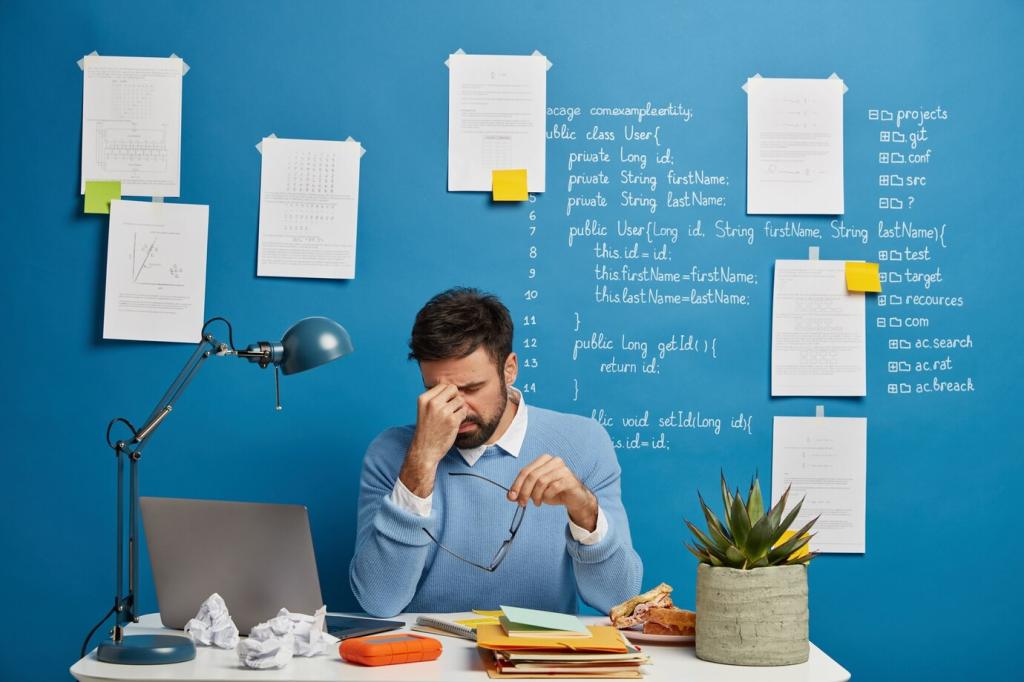Mindfulness Tips for Enhancing Productivity
Mindfulness is a transformative approach that empowers individuals to harness their focus, reduce stress, and boost their efficiency in daily tasks. By cultivating an attentive and non-judgmental awareness of the present moment, you can develop habits that lead to sustained productivity and improved well-being. Embracing mindfulness in the workplace or during personal projects helps you navigate challenges with greater clarity, make better decisions, and manage your time effectively. In this guide, you’ll discover practical mindfulness strategies specifically designed to optimize your workflow and unleash your potential.
Cultivating Present Moment Awareness
Breathing Techniques for Focus
Utilizing controlled breathing techniques provides a direct path to sharpening focus and grounding yourself in the present. Deep, intentional breaths signal the nervous system to calm down, making it easier to release tension and quiet mind chatter. Whenever your thoughts drift or stress builds up, taking a few moments for mindful breathing brings you back to a place of clarity and attentiveness. Over time, this simple practice rewires your response to distractions, allowing you to re-focus with ease and work more efficiently.
Mindful Task Engagement
Engaging with your tasks mindfully means fully immersing yourself in each activity without letting your thoughts wander to future obligations or past mistakes. By giving undivided attention to one duty at a time, you complete it with greater care and typically in less time. This deliberate engagement also makes mundane tasks more enjoyable and meaningful, infusing your work routine with a sense of purpose. Regular practice of mindful task engagement fosters consistency and sets a positive tone for your entire workflow.
The Power of Attention-Reset Moments
Introducing short attention-reset moments throughout your day enhances your ability to maintain present moment focus. These are intentional pauses designed to check in with your current state—observing thoughts, emotions, and physical sensations without judgment. Even a brief reset can interrupt patterns of fatigue or distraction, providing the mental space needed to continue working productively. By building these moments into your daily routine, you sustain energy and elevate your output.

Decluttering and Organizing Your Space
A cluttered workspace often leads to a cluttered mind, making it difficult to remain focused and efficient. By regularly decluttering and organizing your physical environment, you create visual and psychological space for productivity to flourish. Mindfully arranging your tools and materials ensures that everything you need is within reach, minimizing interruptions and fostering a greater sense of control over your workflow. This deliberate organization supports a harmonious state of mind conducive to sustained concentration.
Choosing Calming Sensory Elements
Your surroundings play a crucial role in setting the tone for your workday. Introducing calming sensory elements—such as soft lighting, subtle background music, or soothing scents—can help lower anxiety and sharpen your focus. These sensory cues signal to your brain that it is time to relax and engage with tasks thoughtfully. Selecting elements that resonate with your personal preferences ensures the positive effects are maximized, creating a space where mindfulness and productivity go hand in hand.
Setting Clear Work Boundaries
Establishing boundaries within your workspace is essential to maintaining mindfulness and productivity. This means not only having a designated area for work but also defining time blocks when you are unavailable for non-work activities. Setting these boundaries conveys respect for your own time and energy, reducing the likelihood of interruptions and multitasking. Over time, such boundaries support a deeper engagement in your work and help nurture a more sustainable, mindful approach to productivity.

Recognizing Internal and External Distractions
To address distractions effectively, it’s important to differentiate between those that originate internally—like wandering thoughts or emotional worries—and those arising externally, such as notifications and noisy surroundings. Mindful observation allows you to notice these interruptions as they happen, without automatically reacting. This increased awareness helps you experiment with personalized strategies for minimizing or neutralizing distractions, ultimately keeping you aligned with your intentions.
Gentle Refocusing Techniques
When you notice your attention slipping away from the task at hand, employing gentle refocusing techniques can make a significant difference. Instead of criticizing yourself, simply acknowledge the distraction and purposefully guide your focus back to the present moment. Techniques such as mentally labeling the distraction or visualizing your attention as a beam of light can help reinforce this process. The more you practice, the more naturally and quickly you’ll be able to return to productive engagement.
Creating a Distraction-Resistant Routine
Developing a daily routine that anticipates common distractions sets you up for mindful productivity. This might involve scheduling focused work periods during your most alert times or setting technology boundaries to limit interruptions. By proactively structuring your day in this way, you reduce the frequency and impact of distractions, allowing for longer stretches of deep, meaningful work. Such routines reinforce your commitment to mindfulness and make high productivity a natural outcome.
Setting Intentional Goals for the Day
Establishing clear and realistic goals at the start of each day is a mindful practice that gives structure and purpose to your work. Rather than overwhelming yourself with endless to-do lists, choose a handful of meaningful objectives that reflect your core priorities. This approach encourages you to work with intention and directs your focus toward what will truly move you forward. Checking in with these intentions throughout the day keeps you grounded and helps prevent getting lost in unimportant tasks.
Prioritizing with Purpose
Mindful prioritization involves assessing the true importance and urgency of each task before assigning your attention. Instead of defaulting to what feels easy or immediately rewarding, pause to consider which tasks offer the greatest value. This thoughtful evaluation helps you spend your time wisely, ensuring that your efforts are aligned with both your personal and professional goals. Practicing this habit regularly strengthens your decision-making and fosters ongoing productivity.
Balancing Work and Breaks Deliberately
A key aspect of effective time management is knowing when to work and when to rest. Mindful breaks are scheduled with purpose, not as procrastination, but as a way to recharge your mind and body. Using techniques like the Pomodoro method, you can alternate focused work with restorative pauses, maintaining high energy levels throughout your day. Treating both work and breaks as intentional choices ultimately leads to a more consistent and satisfying workflow.
Harnessing Mindful Communication
Active listening is an essential mindfulness skill that transforms the quality of your conversations. By focusing fully on the speaker—rather than preparing your response or letting your mind wander—you gain a deeper understanding of their message. This attentive presence encourages open dialogue, reduces conflict, and ensures everyone involved feels valued. Practicing active listening makes meetings and collaborations more productive and mutually satisfying.

Previous
Next
Embracing Single-Tasking Over Multitasking
Attempting to juggle multiple tasks at once leads to decreased performance, errors, and a fragmented sense of accomplishment. Each task switch comes with a cognitive cost as your brain readjusts focus, slowing you down overall. Mindful recognition of these costs motivates a shift toward single-tasking, where energy is invested deeply into one activity at a time. This shift not only boosts productivity but also enhances satisfaction with your work.
Previous
Next
